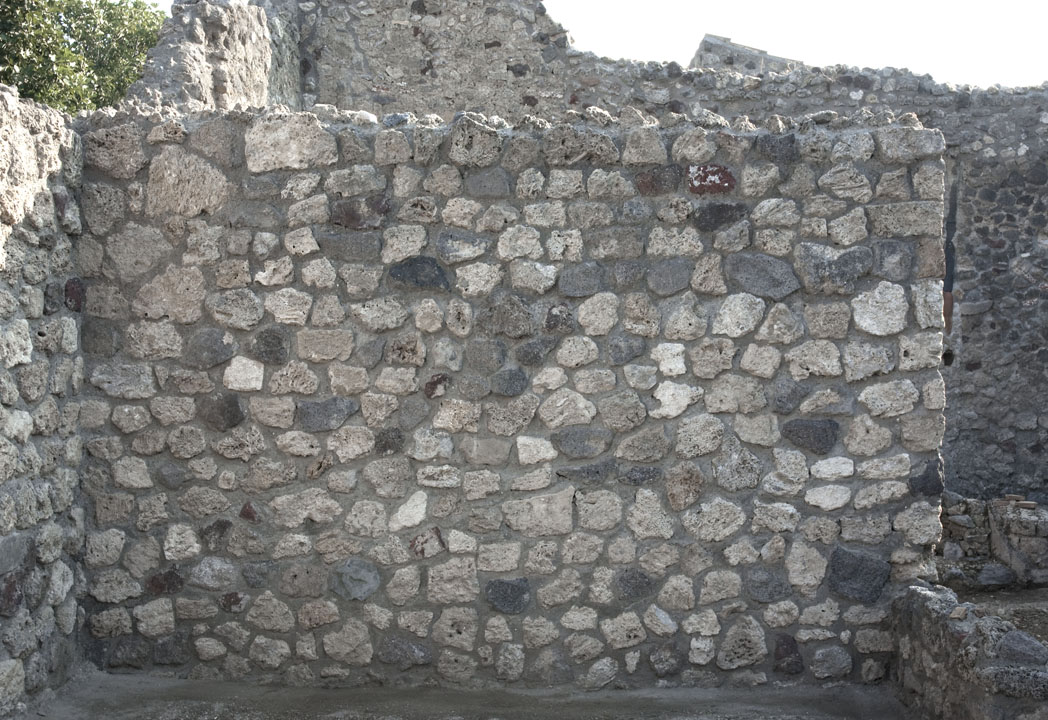East Wall
Description
Henrik Boman & Monika Nilsson
The east wall is completely destroyed, most likely in connection with the WW II bomb hits in the area. Only a short stretch, 0.6m in length, of the foundation, possibly also including the lowest part of the wall, is preserved at the SE corner.
The slanting position of these few stones indicates that the wall was forced to the east by significant power, which is coherent with an explosion of one of the two bombs that hit the area.
Despite a trial trench (see Details below), no other remains of the east wall were recovered. Neither are there any bounding stones preserved in the N wall; this wall is however also badly damaged, but we can conclude that the W wall was attached to the N wall without bounding stones, just like the other N-S oriented walls in the bakery.
The wall had originally a window facing the viridarium, but it was sealed for the construction of the oven in the open space between room g and the pluteus of the viridarium.
Rebuilding in 2008
The wall was completely rebuilt in 2008. The filled-in window was not included in the reconstruction.
The use of the area as a modern dump
A large concentration of plaster fragments was found approx. 2m from the N wall, just east of the line of the eastern wall of room g. The plaster fragments could be from the now destroyed wall, but the concentration of the fragments is more consistent with a dump than fallen plaster.
Trial trench by the east wall of room g
With the purpose of examining the wall between room g and the peristyle, a trial trench was dug 1.6m from the N wall (by the vertical brick inlay in the wall), in line with the remains in the SE corner.
In this area, a concentration of plaster (type G, see the plaster analysis), mixed with terracotta fragments and reused material, was found at approx. 0.3m below the surface we concluded to be the general floor level of the house. The concentration of plaster was substantial, though no foundations for walls or beddings for a floor (neither in room g nor in the peristyle) were found. The contrast between areas of stone mixed with very soft earth and areas with the consistency described above was significant.
When the investigation was brought to an end (at a depth of x + 0.614 — 1.827m) there were still no indications of a wall foundation or a floor bedding.
The pieces of plaster and terracotta under floor level most likely constitute the modern act of filling the bomb crater.

